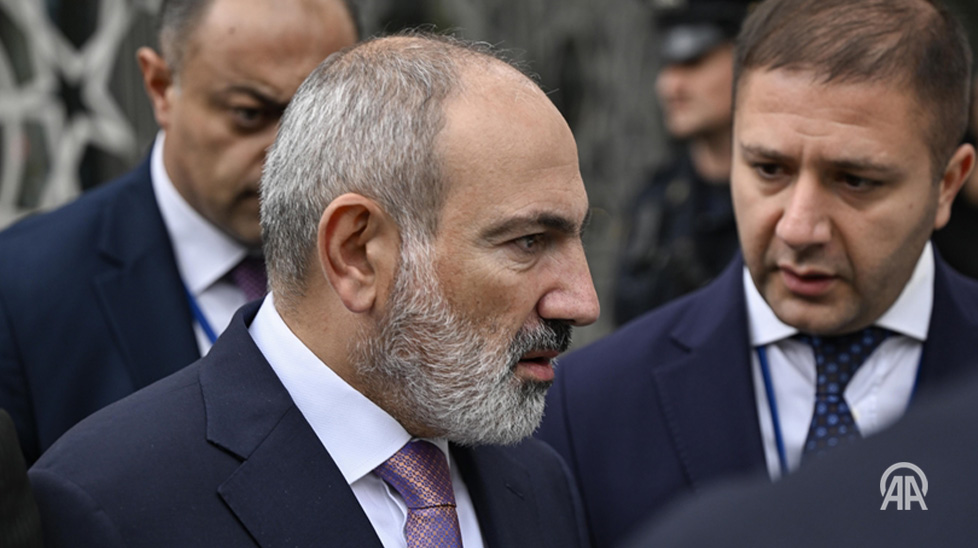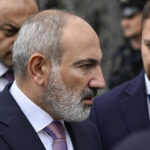The attempted coup in Serbia represents a critical turning point in Balkan politics, exposing fragile domestic institutions and Serbia’s delicate balance between the EU and Russia. While the plot was swiftly neutralized, the event raises urgent questions about Russian subversion tactics, the timing amid regional instability, and striking similarities with the recent coup attempt in Armenia. The fallout could reshape Serbia’s foreign alignments and security posture for years to come.

I. Why Now? Strategic and Domestic Timing
1. Political Crossroads for Serbia
- Serbia is under intense pressure from the EU and U.S. to:
- Align more clearly on Ukraine,
- Normalize relations with Kosovo,
- Reduce Russian energy dependency.
- President Aleksandar Vučić faces growing opposition, especially from nationalist and far-right factions who accuse him of “betraying Slavic unity.”
The coup attempt appears timed to derail reforms and force a shift back toward a pro-Russian hardline.
2. Distraction from International Negotiations
- The coup coincided with Belgrade–Pristina talks, mediated by Brussels.
- Disrupting these talks serves Russian interests by maintaining frozen conflicts and blocking EU integration paths.
3. Socio-Economic Pressure and Elite Tensions
- Serbia is dealing with:
- Inflation,
- Energy insecurity,
- Popular fatigue with corruption,
- The regime’s inner circle is fragmenting, creating an opening for outside interference.
II. Russian Footprint: Hidden Hand, Familiar Tactics
1. GRU & FSB Influence Networks
- Russian intelligence has deep roots in Serbia’s:
- Military (officers trained in Russia),
- Security services (BIA infiltration risks),
- Orthodox Church and far-right political movements.
Similar to Armenia, GRU likely provided operational signals, while FSB worked to create a political and ideological narrative around “sovereignty betrayal.”
2. Use of Paramilitary Veterans and Nationalist Militias
- Coup actors reportedly had ties to:
- Veterans of the Kosovo and Bosnian wars
- Far-right groups like Srpska Desnica and Obraz
- Russian-linked training camps in the Balkans
Echoes the Armenia model, where disaffected military and nationalist actors were mobilized to apply “patriotic pressure.”
3. Information War & Religious Messaging
- Russian-funded media (RT Balkan, Sputnik Serbia) amplified anti-EU, anti-NATO sentiment in weeks leading up to the coup.
- Orthodox clergy close to Moscow warned of a “Western spiritual occupation.”
Armenia and Serbia both saw the Orthodox Church used as a soft-power lever by the Kremlin.
III. Parallels with the Armenian Coup Attempt
| Dimension | Armenia | Serbia |
| External instigator | Russia (GRU/FSB/SVR) | Russia (GRU/FSB) |
| Trigger issue | Westward drift, CSTO rejection | Kosovo talks, EU alignment pressure |
| Local actors | Retired generals, NSS officers | Paramilitary vets, BIA-linked groups |
| Clerical influence | Apostolic Church with Russian ties | Serbian Orthodox clergy aligned with Moscow |
| Narrative used | “National humiliation,” “betrayal” | “Western colonization,” “Orthodox unity” |
IV. Consequences of the Coup Attempt
A. Internal Political Shake-Up
- Vučić is likely to:
- Purge pro-Russian figures in military and intelligence,
- Tighten control over far-right factions,
- Accelerate covert cooperation with Western intelligence.
B. Public Polarization
- Short-term rise in nationalism may hinder reform momentum,
- Potential for new protests or radicalization, particularly in southern Serbia.
V. Impact on Serbia–Russia Relations
1. Rapid Cooling
- Serbia has already distanced itself publicly, with Vučić implying “foreign sabotage.”
- Defense cooperation with Russia is now seen as a liability, not an asset.
2. Strategic Realignment
- Expect closer security cooperation with NATO (informally) and U.S./EU intelligence services.
- Serbia may accelerate:
- Energy diversification,
- Military reform,
- De-Russification of critical infrastructure.
3. Public Messaging Shift
- Serbia likely to reframe its neutrality:
- Not pro-West, but anti-destabilization,
- Justifying closer ties with Europe as a matter of national survival.
The Serbian coup attempt is not isolated — it fits a pattern of Russian hybrid coups targeting transitional states drifting away from Moscow’s sphere. The similarities with Armenia are striking, and the failure of both attempts signals not only growing desperation in Moscow, but also a new phase of open resistance to Russian influence among post-Soviet and Balkan elites.
Vučić’s survival may now depend on his ability to:
- Decisively purge pro-Russian actors,
- Stabilize institutions,
- And balance East-West pressures with greater transparency.
Moscow Doesn’t Want Allies — It Wants Dependents
- Russia does not seek equal partnerships, even with culturally close nations. It wants:
- Controlled client states
- Subservient regimes
- Regimes that depend on Moscow for survival, not legitimacy
🔻 So when an “ally” like Armenia or Serbia:
- Builds ties with the EU/U.S.
- Questions Russia’s military utility (e.g. CSTO failures),
- Shows domestic independence,
…they are immediately reclassified as “unreliable.”
II. Regime Control Is More Important Than Ideological Loyalty
- Russia does not care if a leader is pro-Russian in words — it needs them to be vulnerable and controllable.
Armenia: Pashinyan maintained CSTO ties for years, but began moving west after the 2020 war.
Serbia: Vučić talks Slavic unity, but negotiates with NATO and the EU.
From Moscow’s perspective, even a wavering ally is more dangerous than an open enemy, because it sets a precedent of disobedience in Russia’s neighborhood.
III. Moscow Uses Destabilization as a Tool of Control
- Russia prefers its partners to be:
- Internally fragile,
- Dependent on Russian “stabilization”,
- Vulnerable to Russian intelligence penetration.
When an ally becomes stable and sovereign enough to choose its own path, Moscow may initiate controlled chaos — a “coup,” riot, cyberattack, or elite defection — to remind them who holds the keys.
IV. Russia Is Practicing Preemptive Betrayal
- Moscow assumes that over time, all post-Soviet or Slavic regimes will drift West.
- So it:
- Destabilizes first, to prevent smoother transitions.
- Ensures that if a regime falls, it does so in a controlled, Russian-influenced scenario.
- Sends a message to other “partners” — you may be next if you defect.
It’s a mafia-style “burn the house before they move out” logic.
V. Geopolitical Theater: Power Through Chaos
- Russia often benefits when its neighbors are:
- Distracted by internal crises,
- Locked in frozen conflicts,
- Unable to integrate with NATO or the EU.
In both Armenia and Serbia:
- Internal instability slows Western diplomacy
- Makes leaders more hesitant to break fully with Moscow
- Enables Russia to present itself as the only actor who can control the fire it started
Final Assessment: Controlled Chaos as Strategy
Russia undermines Armenia and Serbia not because they are enemies — but because they are trying to act like sovereign states.
In the Kremlin’s worldview, sovereignty = threat.
By engineering coups, backing extremist factions, and stirring internal fractures, Moscow ensures:
- No true alignment with the West,
- No political independence from Russian influence,
- A constant state of dependency.
This isn’t the behavior of a traditional ally — it’s the behavior of an imperial patron trying to keep its subjects weak.
The role of Serbian military aid to Ukraine — though unofficial and politically sensitive — was a critical trigger in Russia’s calculus to back or greenlight the coup attempt in Serbia. Even though Belgrade has publicly denied sending arms to Ukraine, Russian intelligence has repeatedly accused Serbia of indirect military support to Kyiv through third parties.
Here’s a detailed breakdown:
Why Serbian Military Aid to Ukraine Was a Trigger for Russia
I. A Red Line Crossed in Moscow’s Eyes
- Russia views Serbia as a core Slavic partner — part of its symbolic and ideological “brotherhood.”
- Any military support — even indirect — to Ukraine is seen as:
- A betrayal of the Russo-Serbian alliance
- A strategic humiliation, because it undermines Russia’s narrative of Serbian loyalty
- A threat to Kremlin control over Balkan narratives
For Moscow, Serbia arming Ukraine is far worse than Poland or France doing so — it breaks the myth of Orthodox solidarity.
II. Evidence of Arms Transfers via Third Parties
- Open-source investigations (e.g., from BIRN, MEE, OCCRP) have shown:
- Serbian ammunition, mortars, and Grad rockets have made it to Ukraine via intermediaries (e.g., Slovakia, Czech Republic, and Poland)
- In 2023–24, several Serbian weapons factories quietly increased production for “unspecified” foreign clients
Serbia profits economically while denying political responsibility — but Russia is well aware of the real end-users.
III. Russian Strategic Logic Behind the Coup Attempt
| Factor | Russia’s Perception |
| Military aid to Ukraine | Disloyalty, betrayal of shared Slavic/Orthodox identity |
| Vučić’s duplicity | Public neutrality, private arms exports = “treason” |
| Growing EU/NATO ties | “Drift” that must be stopped through force or fear |
The coup attempt was meant to punish Vučić, signal to elites not to follow him, and install more reliably pro-Russian leadership.
IV. Russia’s Broader Messaging to Other Allies
By attempting a coup in response to Serbian weapons reaching Ukraine, Moscow sends a chilling message to:
- Hungary: don’t try balancing with NATO too far
- Kazakhstan: don’t sell drones to Europe
- Georgia: we’ll escalate if you keep drifting West
The Serbia case becomes a proxy warning for all “gray zone” states.
V. Final Assessment: Arms to Ukraine = Justification for Destabilization
The shipment of Serbian arms to Ukraine — even indirectly — crossed a psychological and strategic red line for the Kremlin.
- It undermined Moscow’s image of pan-Slavic loyalty.
- It exposed Vučić’s balancing game as untenable.
- And it gave Russian services the ideological and operational pretext to act.
ConclusionThe Serbian military pipeline to Ukraine wasn’t just an arms deal — it was a signal of geopolitical realignment.
Moscow responded the only way it knows how:
With covert punishment, political sabotage, and a coup attempt — to deter Serbia and warn others.




